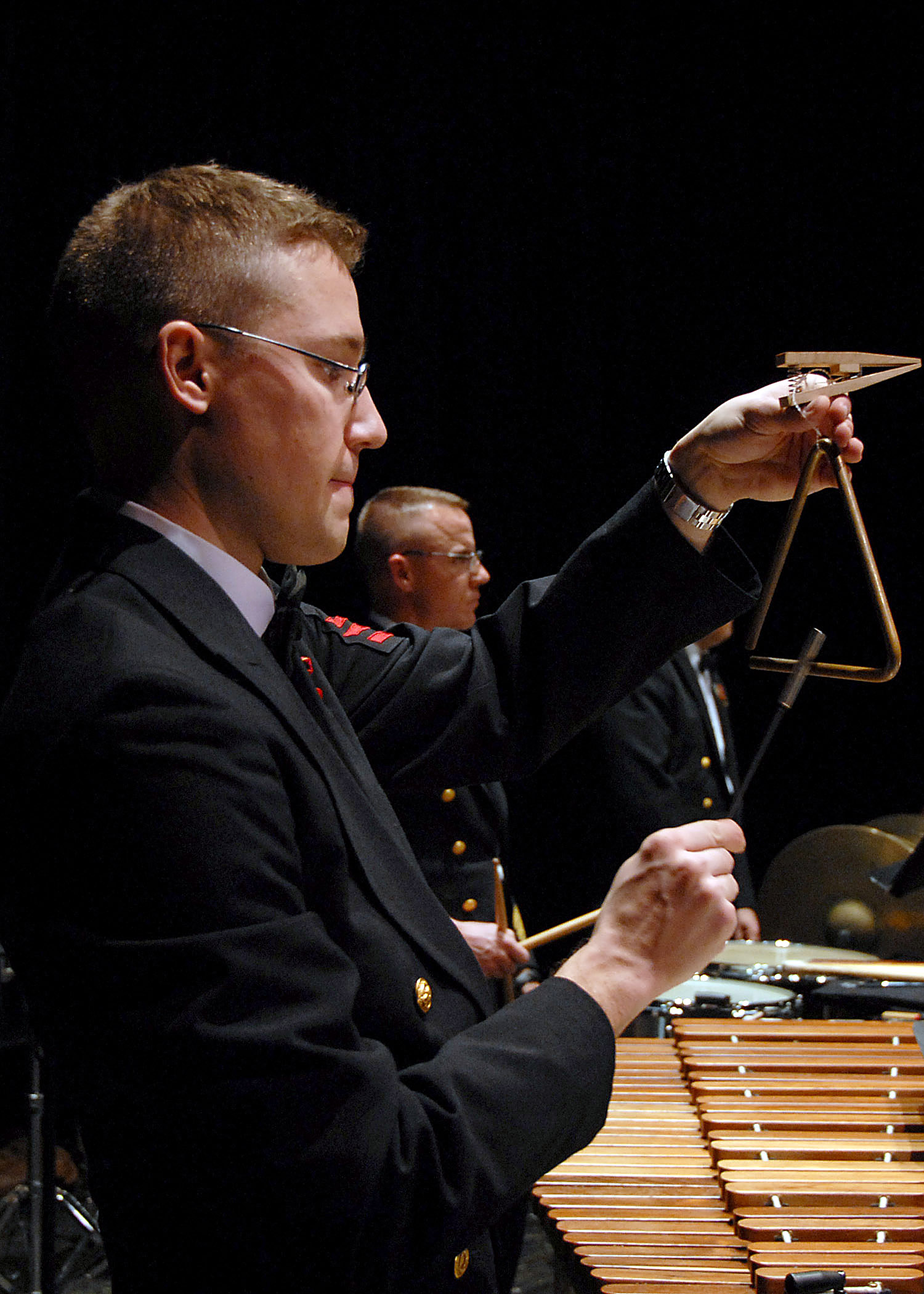 |
| PHOTO"wikimedia.org |
Percussion Instruments 101: How to Play the Concert Triangle
There are literally hundreds of concert percussion instruments in use every day throughout the world. Whether you are playing percussion in a drum circle in Ghana, a jazz band in New Orleans, or a symphony orchestra in Sweden, you are playing an instrument that has traveled and mutated throughout the globe.The percussion instrument the triangle, is a metal rod bent into the shape of a two dimensional geometric triangle with one of the bottom corners disconnected to allow sound waves to escape. The concert triangle often has a slight difference, in that it may have a hole in one corner to loop a piece of nylon to hang the concert triangle. If it is an Alan Abel triangle, it will have a slight difference in the open end. That angle will end in a different thickness, supposedly to help the triangle sound to escape better acoustically. The triangle may be struck near one of the closed angles or may be struck in the middle of the "bottom" rung of the triangle when it is held upright by the percussion player.
The concert percussion triangle will typically hang from a clip, often attached to a music stand or held by the percussion player. It is struck with a metal beater, essentially a thin metal rod. There are literally dozens of triangle beater types and shapes available. The least expensive ones, often accompanying simple elementary school music percussion kits, will resemble the shape of a very large sewing needle, but with a blunt end. Pricier concert triangle percussion beater kits will have several different thicknesses of beaters. Often a professional percussion player will have several copies of a favorite concert triangle beater to better facilitate quick and difficult passages with two
hands.

The triangle roll is perhaps the most difficult, and disputed, percussion technique on the concert triangle. There are two main schools of thought. One percussion school teaches percussion players to create a triangle roll by using a single beater rapidly moving up and down in a closed angle of the triangle. The other school of thought actually hangs the triangle with two clips, open angle facing down. The concert triangle roll, and quick music passages, are played with two beaters on the side facing up (the side with two closed angles). Some percussion players will even have two triangles, each set up differently, to perform difficult music passages. A good percussion player will be able to keep each beat at the same volume and will be able to execute any crescendo or decrescendo perfectly.
Many times the concert triangle is left to the least experienced percussion player who lacks the finesse and proper hand control to execute a difficult music passage professionally and effectively. Playing the concert percussion triangle properly and professionally within the orchestra, band, or wind ensemble setting takes a lot of time and practice.












Comments